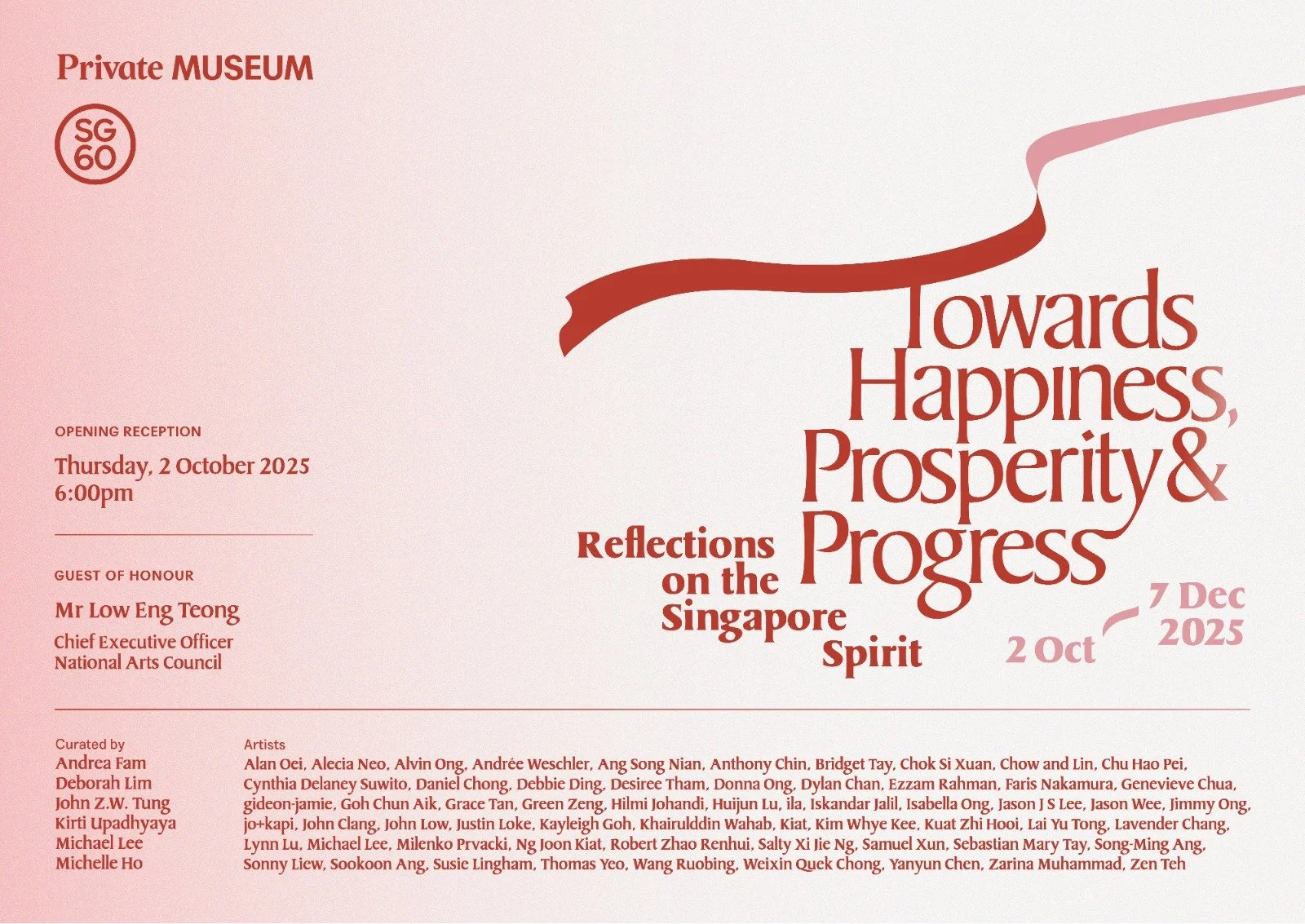Delighted to be showing an iteration of Kaleidoscope Peepshow, which speaks to a pivotal moment of cultural transformation in Singapore.
In celebration of SG60, this landmark exhibition brings together 60 Singaporean and Singapore-based artists, 60 artworks, and 6 curators in a profound reflection of the Singapore spirit.
Shaped by a myriad of curatorial perspectives by six curators, the exhibition unfolds as a set of artistic conversations. Some works reflect on belonging, care, and vulnerability; others explore histories, stories, and names that shape how we understand ourselves. Everyday culture, sightseeing, humour, and local codes appear alongside more universal expressions of identity and memory. Themes of loss and reconnection surface too, asking what it takes to feel present again. Elsewhere, ideas of home, virtue, and lived experience open space for multiple ways of being Singaporean.
Together, these works do not define the Singapore Spirit but trace its many expressions. They suggest that happiness, prosperity, and progress are not endpoints, but ongoing practices revisited across generations, renewed through art, and shared by all who call Singapore home.
Private View
Thursday, 2 October 2025, 6pm
11 Upper Wilkie Road, Singapore 228120








